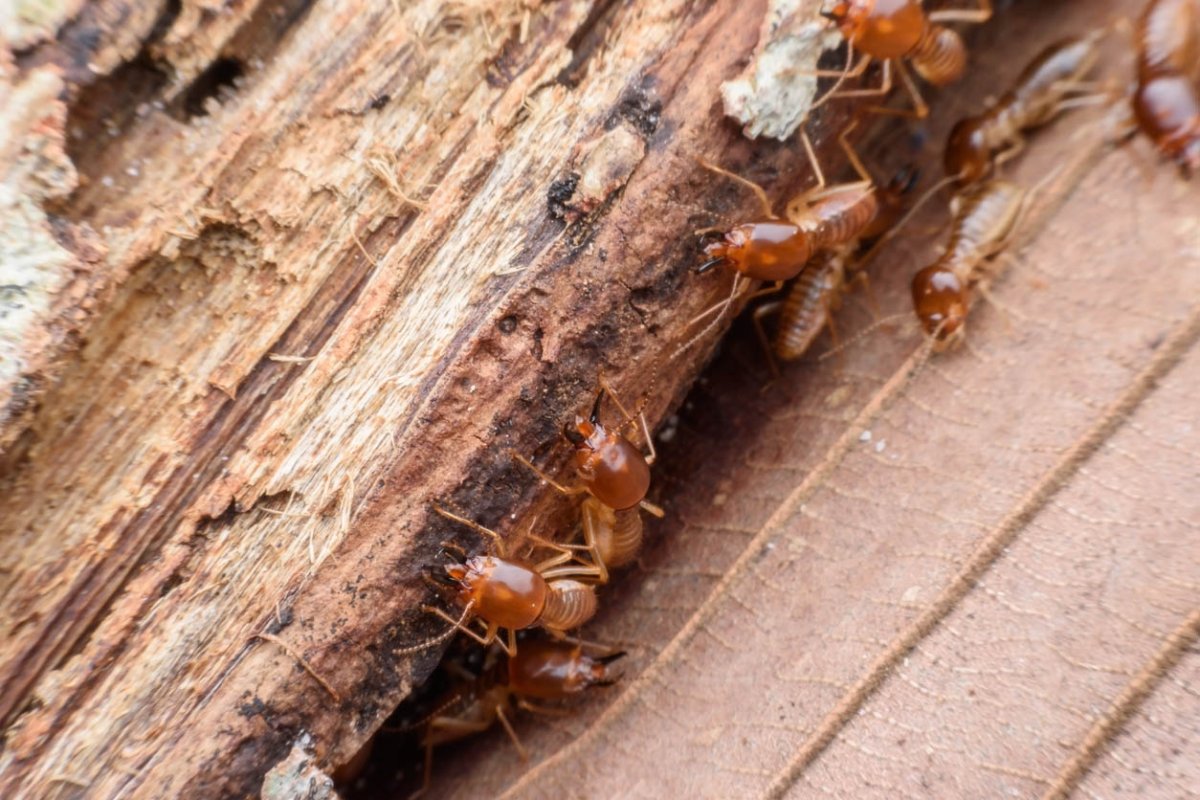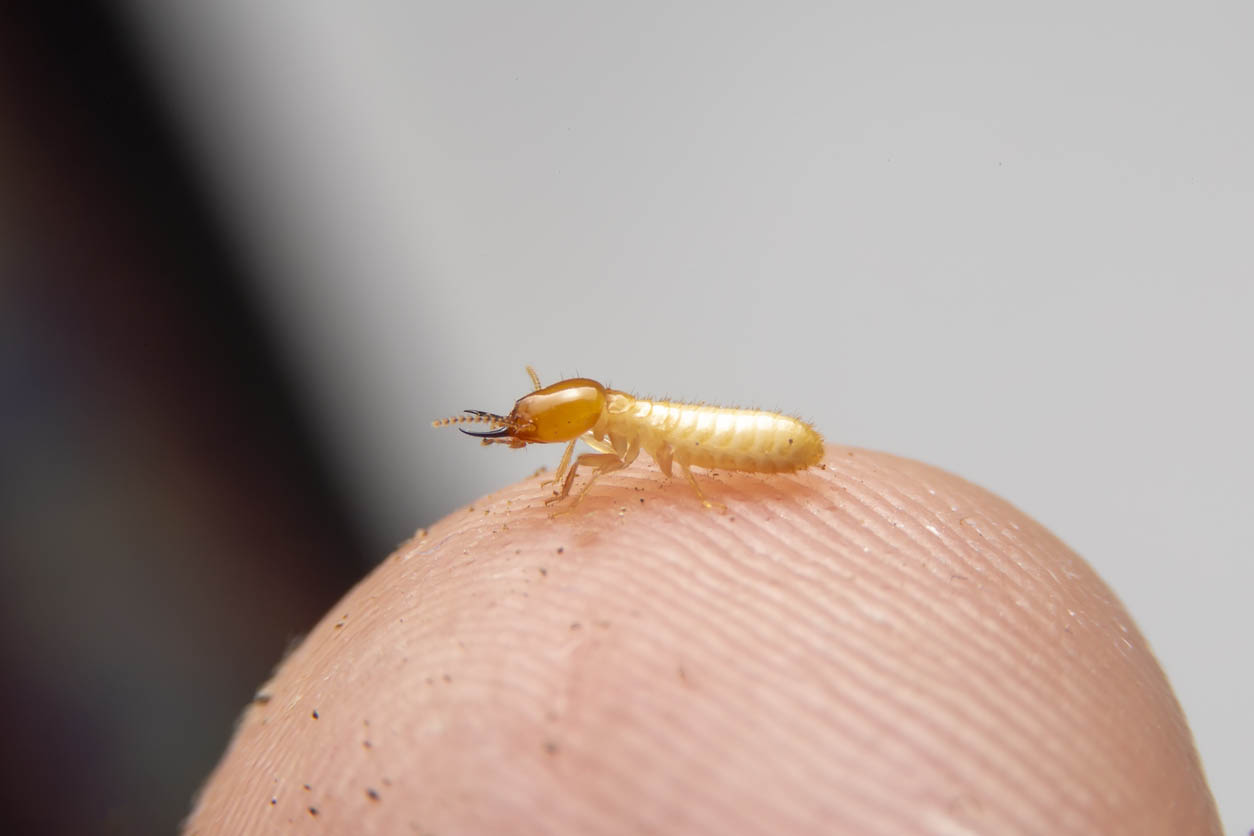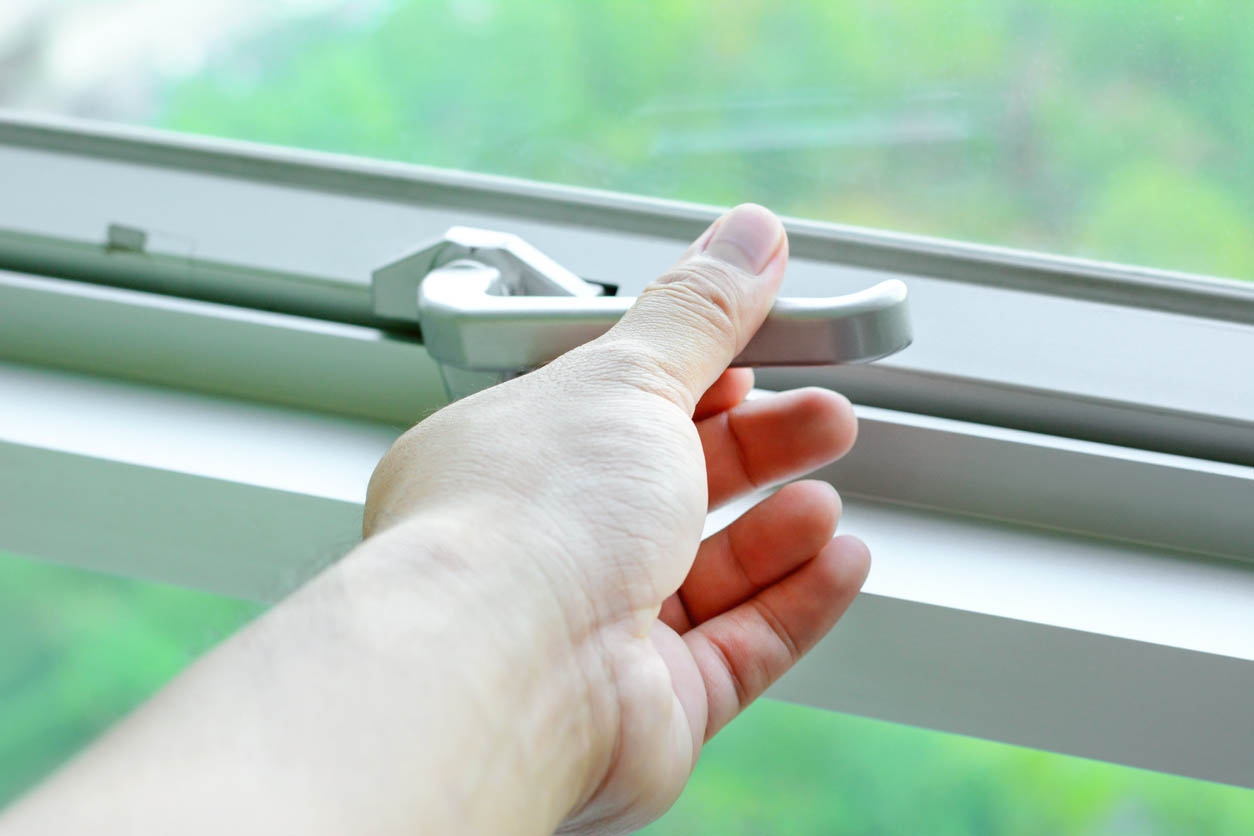

We may earn revenue from the products available on this page and participate in affiliate programs. Learn More ›
Q: I’ve noticed some odd insect activity in and around my home, as well as some soil tunneling near wood features outside the house. Could these be signs of termites?
A: Termites are a common pest. There are some obvious signs of termites like crumbled or collapsed wood, but a lot of termite damage happens in places that aren’t easy to observe.
Being proactive means getting to know what termites are and how they use wood so homeowners know what to look for. These are some of the main signs of termites in a house.
Clicking sounds are coming from the walls.

With tunnels to build and the constant need to shuttle resources, termites are active at all times.
To fuel their busy lives, termites get energy from cellulose, a carbohydrate found in all plants and wood. Termites cut into wood with pincer-like extensions near their mouths and break it down into material for building and nutrition. The movement of a single termite isn’t noticeable, but with hundreds of thousands of termites in a colony, small sounds add up.
The most detectable noise is the warning sounds termites send to others in the colony. When termites perceive a threat, they bang their heads against wood to make a “click” sound. A gentle but persistent chorus of clicks during quiet moments in the household may mean termites are in the walls.
You see dead, winged insects around your home.
Finding dead winged insects by windows or scattered wings without bodies around the perimeters of a home are common indicators of termites.
Flying termites, also called swarmers, are sometimes confused with carpenter ants because of their dark color. However, a flying termite has a long, uniform body with four equal-sized wings. Flying termites lose these wings when they mate, so discarded wings anywhere in a home are a primary sign of termites.
During moderately warm weather, flying termites emerge from hidden spaces to find new wood to set up a new colony. There may be swarms of flying termites around the house or yard during their search for a mate and home. Identifying the source of the swarm can help homeowners find the rest of the colony.

You see insects that look like white ants.
Worker termites, which make up the bulk of a colony, are probably the insect most people think of when they hear the word “termite.” They’re no more than a few eighths of an inch in length, and their bodies are cream-colored and translucent. Because worker termites spend their entire lives creating and maintaining tunnels, they’re the insects found in damaged wood. Soldier termites–with an even larger head and pincers than their worker counterparts–may also be present.
Color is a good indicator to distinguish between ants and termites. Even though termites have various shades, their body color is usually much lighter than even the lightest ants’. Additionally, their body shapes differ, with ants having slim abdomens (mid-sections) with a more pronounced head and thorax (behind), and termites having an overall broader body without a distinct waist between their abdomen and thorax. Termites also have long, straight antennae.
Wood that’s around or part of your home is hollow-sounding.
Termites destroy wood by eating it from the inside out. This is why termite damage is hard to recognize before it’s too late.
The sound wood produces is a way to figure out what’s happening inside. Perform a sound test on different areas around the home, starting with wood that’s known (or strongly suspected) to be free of termites.
By using something to hit the wood of the house, like the back-end of a tool, homeowners can identify different sounds the wood produces, which can speak to its damage. Heavy, undamaged wood absorbs sound quickly, creating a rich, deep sound. Wood that’s hollow from termite damage will have a higher pitch. To get the most accurate gauge on termite damage, follow the wood grain, beginning with the base and moving upward.

Windows in your home are hard to open.
Termites don’t work very far beneath the surface of wood, so strange warping to different wood in the home may be a sign of termites.
Before wood crumbles from termites’ inner handiwork, the network of tunnels they create and the way they rearrange wood particles can cause it to swell. If this wood is part of a structure that opens and closes (like a window), the warping can make it hard to move—especially if it’s been a while since it was last used. The longer the wood remains undisturbed, the more diligent termites can be with their damage.
Not all difficult windows are signs of termites. Other things, like water damage, can affect the quality of the wood in a home. However, termites also like damp wood, so even if they aren’t the cause of warped windows, noticing the need for repair can help prevent a future infestation.
There’s evidence of swarms and mud tubes.
Flying termites only represent part of the colony, so following them to their source often isn’t enough.
Subterranean termites, the most common type of termites in the U.S., need moisture to survive. Most household wood doesn’t have enough moisture for them to thrive, so they create mud tubes to allow moisture from underground into their workspace.
Channels of caked-up mud and termite debris begin in the soil and trail up to the wood of a house. They are typically the width of a standard pencil, and they take some effort to scrape off.
Mud tubes can be found wherever soil meets a potential source of wood in a home, and they actually help termites get past the things they can’t chew through, like concrete, plumbing, or electrical materials. By following a mud tunnel to its ground connection, the entrance to the rest of the colony can be found, and treatment can begin.
If you’re concerned about a possible termite infestation, it’s best to call a professional who can eliminate these pests and stop further damage to your home.
